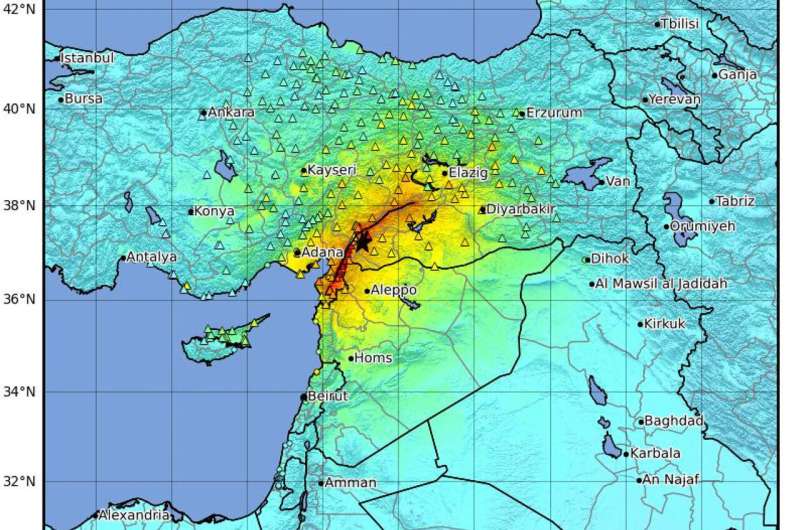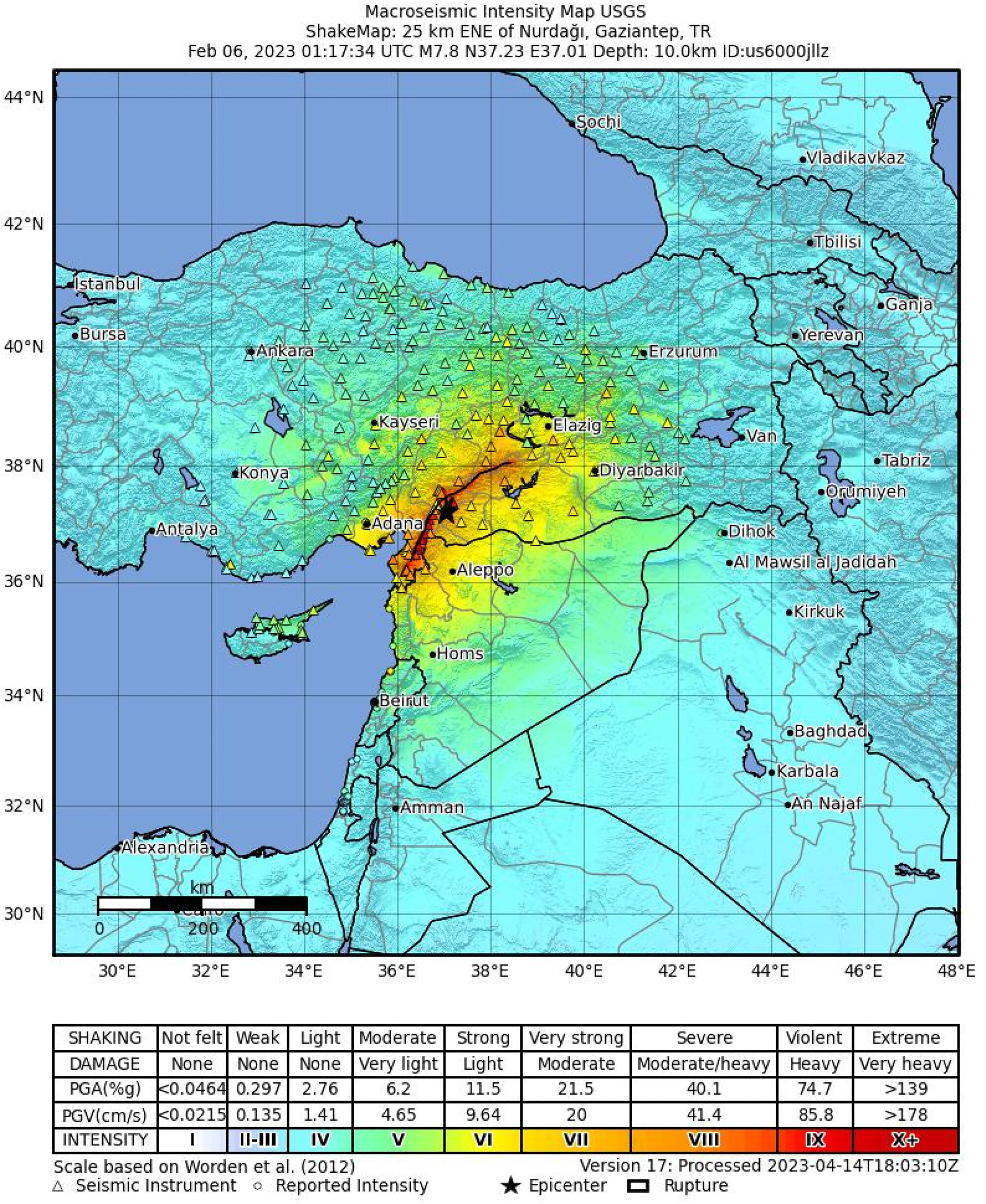
Intensity map and geographic location of the 2023 Turkey earthquake. A black star indicates the epicenter of the earthquake (https://earthquake.usgs.gov/earthquakes). Credit: Journal of Applied Geodesy (2024). DOI: 10.1515/jag-2024-0024
A recent study in Journal of Applied Geodesy suggests.
Developing early warning systems for earthquakes can be very helpful in preventing death and destruction. One such proposed technique involves using satellites to monitor a range of physical and chemical parameters within the earth, atmosphere and the layer of charged particles that exists above it, called the ionosphere.
Such anomalies are known as precursors to earthquakes, and although researchers are aware of them, it has been difficult to definitively identify a pattern of so-called red flags that could indicate an impending earthquake. This is due to the complexity of precursor interactions and their variability in earthquakes and different geographic regions. However, with each earthquake that researchers analyze using increasingly sophisticated satellite technology, these patterns are slowly emerging.
Professor Mehdi Akhoondzadeh of the University of Tehran evaluated a series of satellite data from the period before and after two earthquakes that occurred on February 6, 2023 near the border between Turkey and Syria. This included data from the Chinese seismic-electromagnetic satellite, CSES-01, and the Swarm satellite mission, which consists of three satellites from the European Space Agency.
Strikingly, he observed anomalies in land surface temperature from the earthquake region as early as 12-19 days before the earthquakes and anomalies in atmospheric parameters between 5-10 days before the earthquakes. These included measurements of water vapor, methane, ozone and carbon monoxide levels.
When Professor Akhoondzadeh investigated anomalies in the ionosphere, including measurements of parameters such as electron density and electron temperature, he found clear and striking anomalies 1-5 days before earthquakes.
The times when the anomalies became visible in the ground, atmosphere, and ionosphere, respectively, suggest that these signals originated on the ground and eventually became visible at higher levels in the atmosphere and finally in the ionosphere.
Studying these phenomena could pave the way for earthquake early warning systems, but researchers will need to evaluate other earthquakes in the future to more fully understand these patterns.
“Using CSES-01 satellite data, anomalies in the ionosphere prior to the Turkey earthquakes of February 6, 2023 have been detected for the first time,” said Professor Akhoondzadeh. “By studying anomalies associated with multiple earthquake precursors, the uncertainty in detecting real anomalies is reduced and this can be effective in creating earthquake warning systems with a low number of false alarms.”
More information:
Mehdi Akhoondzadeh, Analysis of Data from China’s First Electromagnetic Seismic Satellite (CSES-01) along with Other Earthquake Precursors Related to the Turkey Earthquakes (Feb. 6, 2023), Journal of Applied Geodesy (2024). DOI: 10.1515/jag-2024-0024
citation: Satellite data reveals anomalies up to 19 days before Turkey 2023 earthquake (2024, June 12) Retrieved June 13, 2024 from https://phys.org/news/2024-06-satellite-reveal-electromagnetic-anomalies- days.html
This document is subject to copyright. Except for any fair agreement for study or private research purposes, no part may be reproduced without written permission. The content is provided for informational purposes only.
